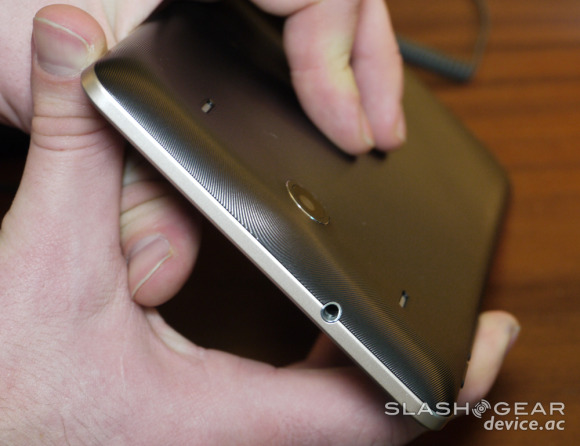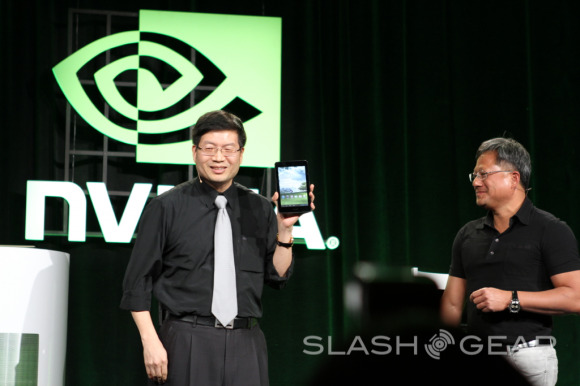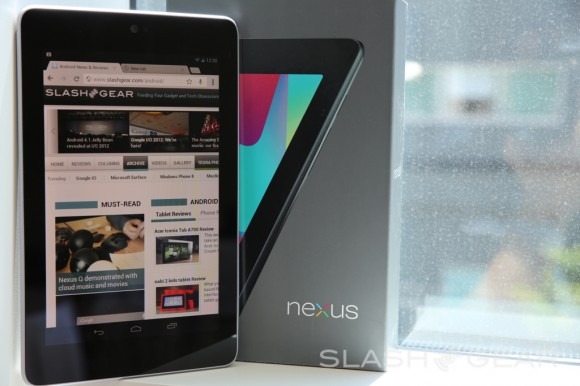Nexus 7 2 And The Details You Want For A Reboot
If there's one tablet out there that's taken the Android world by storm over the very short few years said devices have existed, it's been the ASUS-made Google Nexus 7. What we saw when the machine was first revealed was more of a solid package delivery than it was a market-topping hero product, and here a year and some months later the machine continues to be a hot toping amongst Android enthusiasts. Here in the summer of 2013, chatter begins to surround the next-generation Nexus tablet, the reboot of the Nexus 7: what'll we see next?
During an NVIDIA presentation taking place at CES 2012, ASUS revealed that they'd be teaming up with the company to deliver a cost-cutting multi-core processor-toting 7-inch tablet. This tablet was called, at the time, the MeMo 370T. At the time it was introduced with a $249 price-tag (which seemed rather inexpensive at the time!) Still does today, considering the competition.

Fun fact: the Google Nexus 4 and Google Nexus 7 are both comfortably set in SlashGear's mobile device traffic reports for the entirety of 2013 (the start of the year until here in July), and they don't appear to be going away any time soon. Only the Samsung Galaxy S III, the iPad, and the iPhone (each of whom are counted as one device, not separated by generation), are above the Nexus machines. They and the unknown device horde, of course.

This device retained its code-name, more or less, through the tapping of the hardware by Google and the re-introduction of the machine as the Google Nexus 7. Our hands-on time with the original MeMo 370T proved to be the basis for some real deja-vu in the future: ASUS retained the design well through Google's version.
While the base price fell to right around $199 with NVIDIA's "Kai" strategy, the device itself was delivered in several different iterations for several different costs. The first reveal of what was now called the Nexus 7 took place at Google I/O 2012, the company's yearly developer event, where developers in attendance were given one of the machines to use for development purposes through the future.

Our original Google Nexus 7 review stands true: the machine remains capable of withstanding the current wave of high-powered apps and games. This is shown several times over by NVIDIA and their TegraZone launches that continue even now. The one device revealed and nearly out on the market with NVIDIA's next-generation Tegra 4 processor, NVIDIA SHIELD, will eventually take the place of the company's hero for demonstrations – but for now, and still, it's the Nexus 7 that's utilized most often.
Here in 2013 there's been a whole mess of tips and rumors suggesting an HD display, an upgrade to some 4G LTE action with tips of the ASUS Pad K009 being prepped to take the Nexus 7's place, and Android 4.3 Jelly Bean for good measure.

Above you'll see the multi-colored ASUS MeMo Pad HD 7, one of several machines revealed by the company in the months between the original Nexus 7's unveil and now.
Google is still just now – as recent as March of 2013 – beginning to offer the Nexus 7 for sale in new regions like India. Both Google and ASUS are in no hurry to replace a device that's still doing well on the market, especially if even now companies struggle to deliver similar experiences for a comparable price. See the HP Slate 7, for example – a price drop right out of the gate makes for good Nexus 7 competition fodder, but with a processor that's not nearly as high-powered and software that needs updates to go through HP instead of straight from Google, there's a real barrier.
But no good device goes for too long without a next-generation replacement. There's a suggestion that's to be taken with a double-dose of salt up for grabs at the moment saying we'll see a Nexus 7 reboot as early as this month. That's July of 2013, mind you, and everybody's celebratin'.
Google needs an answer to the Apple iPad mini 2 with retina display, after all, right?
